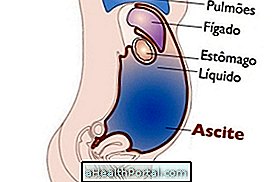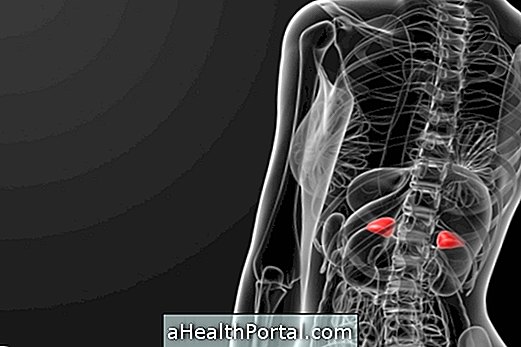The ascites or belly of water is the abnormal accumulation of fluid inside the abdomen, in the space between the tissues lining the abdomen and the abdominal organs.
Ascites have no cure because it is not a disease, but a sign that is usually related to a chronic disease, such as cirrhosis or heart failure, for example. However, ascites can be treated with diuretic medicines like Furosemide, salt restriction in the diet and the ingestion of alcoholic beverages, to eliminate excess fluid in the abdomen. It is worth noting that depending on the case, the ascites may, however, disappear and the patient no longer grasp this signal.
The belly of water can also be caused by an infection with worms called schistosomiasis. Learn more at: Schistosomiasis.
Ascite's Photos


Fluids that can accumulate inside the abdomen can be blood plasma, which is the name given to blood fluid, lymph, which is a transparent liquid present throughout the body that is part of the circulation of the gums, bile or urine, for example. example.
How to treat ascites
Treatment for ascites or watery belly usually includes:
- Diuretic remedies such as Spironolactone, which has the trade name Aldactone, or Furosemide, which has the trade name Lasix;
- Restriction of salt in the diet, which should not exceed 2 g / day, through a diet plan indicated by a nutritionist. Learn more about diet in: Diet for ascites;
- Interruption of alcohol intake;
- Abdominal paracentesis, in severe cases where treatment with diuretic medicines is not working, which is a medical procedure with local anesthesia, in which a needle is inserted into the abdomen to extract the liquid from the ascites;
- Antibiotics when infection of the ascites fluid occurs, called spontaneous bacterial peritonitis, a serious complication that can lead to death, and the individual must also be hospitalized.
Some home remedies with diuretic properties may also help in the treatment of ascites, see: Home remedy for ascites.
Types of ascites
Some types of ascites or belly of water can be:
- Chylous ascites is the accumulation of lymph within the abdomen due to obstruction of the lymphatic pathways;
- Pancreatic ascites which is the accumulation of fluid usually due to chronic pancreatitis which is the chronic inflammation of the pancreas;
- Fetal ascites which is the presence of fluid inside the abdomen of the fetus or newborn and which may be a symptom of fetal hydrops, a complication characterized by swelling of the fetus in the uterus.
Any type of ascites should be treated as early as possible to avoid complications such as hepatic encephalopathy, which can lead to confusion and coma, or spontaneous bacterial peritonitis, which can lead to death.
Ascites symptoms
The symptoms of ascites are related to the volume of fluid inside the abdomen. In the beginning, ascites usually have no symptoms, however, in the case of massive ascites, symptoms such as:
- Swelling and belly growth;
- Difficulty in breathing;
- Pain in the abdomen;
- Loss of appetite;
- Weight gain for no apparent reason;
- Feeling of weight and pressure in the abdomen;
- Nausea;
- Vomiting.
Ascites may be accompanied by other signs and symptoms such as enlarged liver, swelling of the legs and feet or eyes, and yellowing of the skin, depending on the cause, liver cirrhosis, renal failure, cancer, tuberculosis, or heart failure. example.























